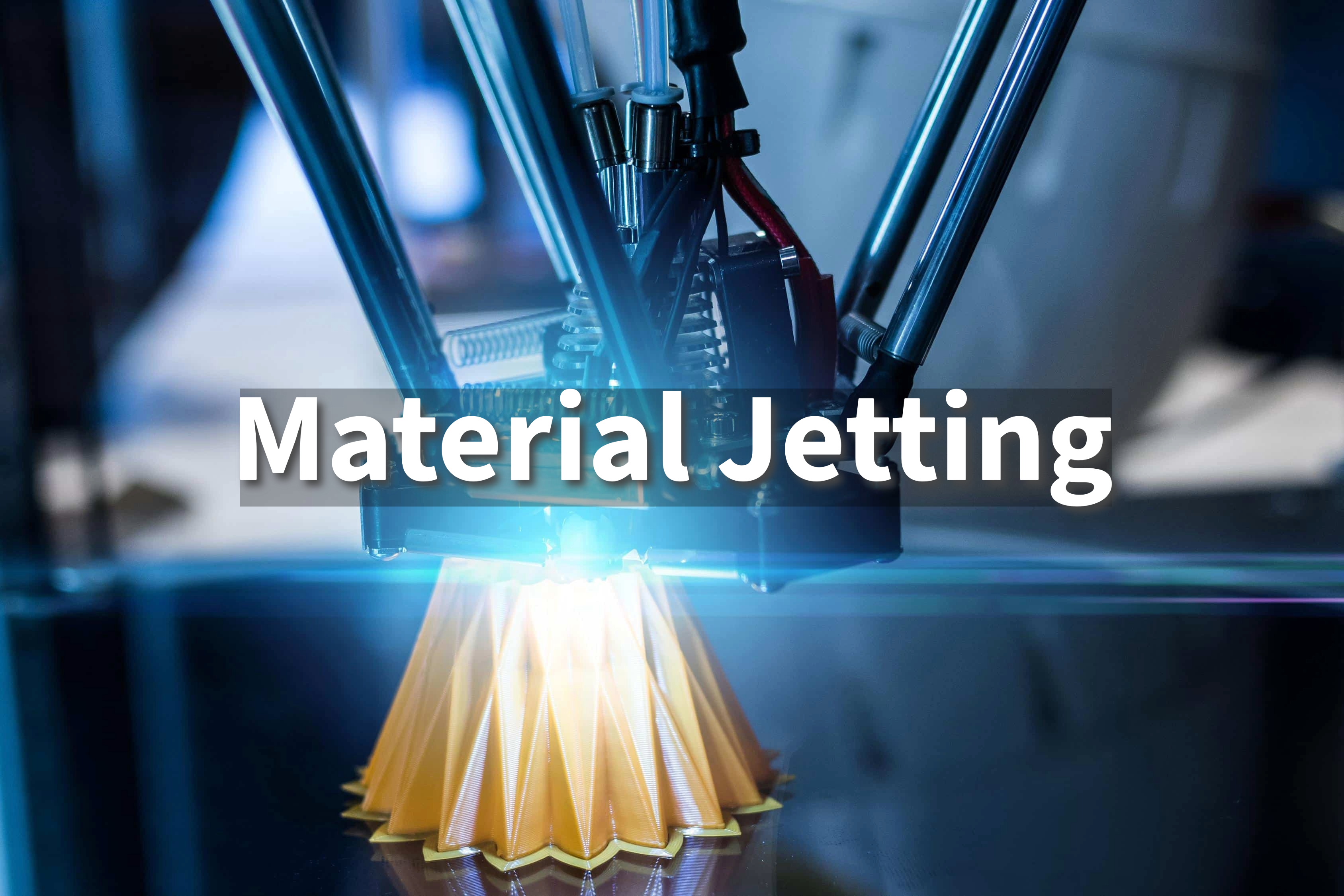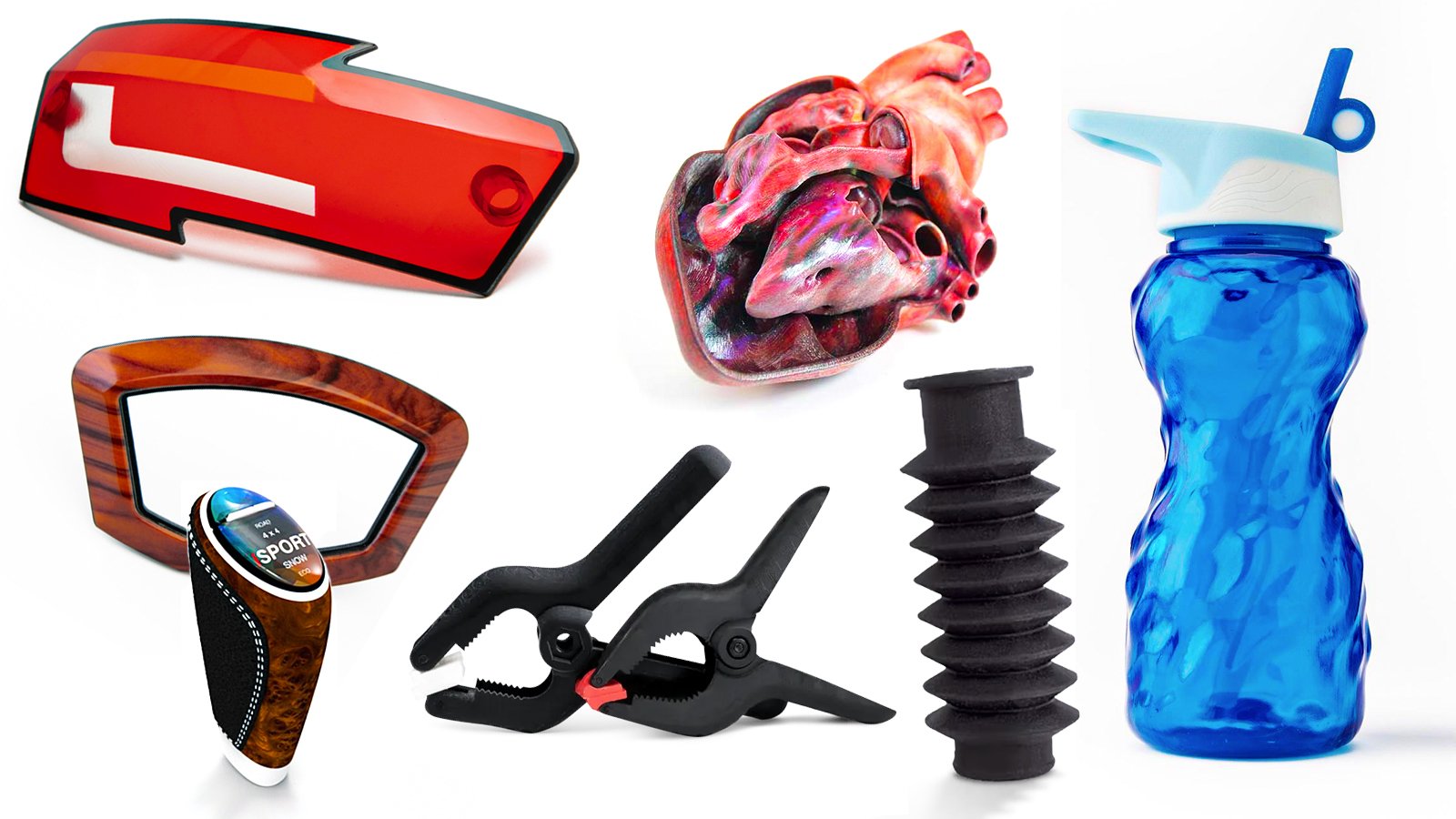Material Jetting: A New Era in 3D Printing

Explore the innovative world of material jetting 3D printing. Learn how this technology transforms design, materials, and production processes.
Introduction
Material jetting is a 3D printing method that uses an inkjet print head to deposit and bond layers of liquid photopolymer. It creates complex, detailed parts with high-quality surfaces.
Its high resolution and multi-material capabilities make it ideal for advanced applications in industries like consumer products, dental, and medical devices.
What is Material Jetting?
Definition
Material jetting is a 3D printing technique that uses inkjet technology to deposit and cure liquid photopolymers layer by layer to create 3D objects.
The Process
A print head deposits thin layers of liquid photopolymer onto a build platform. UV light instantly cures each layer, bonding it to the one below.
This process is repeated, building the 3D object layer by layer from the bottom up.

Material Jetting vs. Other 3D Printing Methods
Material Jetting vs. FDM
Material Jetting uses inkjet technology to deposit liquid photopolymer, which is cured by UV light. It offers extremely high resolution and can combine multiple materials in a single print.
FDM uses a heated nozzle to extrude thermoplastic filaments layer by layer. It is more affordable but has lower resolution and surface finish compared to material jetting.
Key Differences: Material jetting has superior surface quality and detail, while FDM is more cost-effective for larger, less intricate parts.
Material Jetting vs. SLA
Material Jetting builds parts by jetting liquid photopolymer in ultra-thin layers, cured instantly by UV light, while SLA uses a laser to cure liquid resin in a vat, layer by layer. SLA can produce high-resolution parts but typically uses one material at a time.
Key Differences: Material jetting allows multi-material printing in a single part, while SLA offers similar precision but with fewer material options.
Material Jetting vs. SLS
Material Jetting creates parts with high precision and smooth surface finishes, using photopolymers.
SLS uses a laser to sinter powdered materials like nylon, producing durable parts. SLS parts are more functional but have rougher surfaces.
Key Differences: Material jetting is better for detailed, aesthetic parts, while SLS is suited for durable, functional prototypes.
Materials Used in Material Jetting
Material jetting 3D printers use liquid photopolymer materials that are cured using UV light. Common photopolymers used include:
Resins: These are based on acrylic or epoxy resins that cure to a hard, durable plastic suitable for prototypes, models and some functional parts.
Elastomers: Rubber-like photopolymers that are flexible when cured, making them ideal for applications requiring flexibility like medical models.
Wax: Phase change materials that are initially liquid at printing temperatures but harden to a soft, wax-like material once cooled.

Advantages and Disadvantages of Material Jetting
Advantages
Multi-material printing: Material jetting allows incorporation of different materials into a single part through multiple print heads. This enables new functionalities.
High resolution and precision: It produces highly accurate parts with fine intricate details as small as 16 microns thanks to its non-contact inkjet printing method.
Superior surface finish: The photo-curing process yields smooth surfaces minimizing additional post-processing needs.
Disadvantages
Higher material costs: Photopolymers used are generally more expensive than common FDM 3D printer thermoplastics.
Slower print speeds: Compared to FDM and SLS, material jetting has longer build times due to sequential layer curing under UV light.
Material limitations: Choice of composite materials is currently limited to resins, rubbers and waxes compatible with the process.
Post-curing required: Parts require a final UV cure to fully solidify the material after printing.
Real-World Applications
Medical Field - Anatomical Models:
In the medical sector, Material Jetting is employed to create highly accurate anatomical models, enabling doctors to simulate surgeries and enhance pre-surgical planning.

Source: Unionfab
For instance, Unionfab has used PolyJet technology to print multi-material models that replicate human tissues.
Consumer Goods Prototyping
In the consumer goods industry, Material Jetting is used to create high-resolution prototypes of products such as electronics, household items, and packaging designs. This method enables companies to produce detailed prototypes with various materials, colors, and textures, allowing for better visualization and testing before mass production.

Source: all3dp.com
Prosthetic Sockets
The military worked with a material jetting manufacturer to 3D print prosthetic sockets customized for individual amputee soldiers using elastomeric photopolymers. This provided a better, more secure fit than traditionally fabricated sockets.
Orthotics
An orthotics lab evaluated material jetting for producing insoles, arch supports and orthopedic shoe inserts. The process allowed flexible yet durable materials to be 3D printed with contoured profiles tailored for individual patients.
Conclusion
In summary, material jetting offers high-detail, multi-material 3D printing, making it ideal for both prototyping and final production.
Industries have successfully used this technology to create advanced parts, such as personalized prosthetics, dental models, and consumer products.
Explore the Potential of 3D Printing with Unionfab!
Unlock new possibilities in manufacturing with Unionfab’s cutting-edge 3D printing solutions!
With advanced 3D printing techniques like SLS, SLA,SLM, Unionfab delivers precision, speed, and scalability for projects of any size.
Contact to learn how Unionfab can help you reduce costs, and accelerate innovation. Get started on your next project today!

